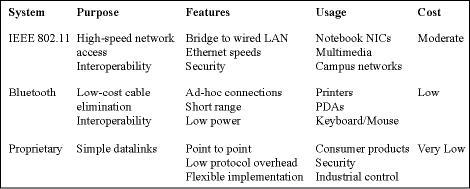Transceiver architectures for low-cost radios - Part I
9 April 2003
Telecoms, Datacoms, Wireless, IoT
Access Control & Identity Management
Steve Moore, director applications, Micro Linear
Anyone who has ever worked in the wireless field knows there are as many different wireless implementations as there are useful applications. Many of today's systems engineers continue to have difficulty specifying detailed radio requirements and evaluating possible trade-offs in performance. At times it seems easier to just select one of the popular wireless systems that we hear about everyday (eg, 802.11, Bluetooth) and not sweat the specifics of the wireless implementation.
For applications where interoperability is a requirement this is a logical (and necessary) choice, but for many other wireless applications (eg, cordless phones, industrial control, consumer game controllers, meter reading, wireless audio, security) systems designers can usually reduce size, cost, and power by using highly-integrated RF transceivers (like the Micro Linear ML2724) and developing simple radio protocols optimised to the specific application.
For example, using an 802.11 solution running at 11 Mbps with carrier sense multiple access, full TCP/IP stack, encryption, and PCMCIA host interface for anything other than a high-speed, Ethernet-compatible wireless network will almost certainly result in unnecessary cost, size, and power. Likewise, a Bluetooth solution, while much lower cost and lower power than 802.11, still carries the additional overhead associated with a complex peer-to-peer personal area network (PAN) designed with interoperability as its primary feature.
The downside of adopting standards-based solutions is that in a lot of wireless applications these solutions have many features not required resulting in unnecessary cost and power. Table 1 shows a simple comparison of the features, intended purpose, and relative cost between some of the more popular solutions.
To effectively realise an optimal wireless solution doesn't have to be complex and mysterious, especially with today's highly integrated radio transceiver ICs. Knowing basic radio specifications and how to choose a radio architecture and link protocol is all that is necessary.
Table 1. Comparison of common wireless systems
In a subsequent issue of Dataweek I will present Part II of this series that will describe some of the basic system-level radio specifications to consider along with a brief overview of common radio architectures found in today's integrated transceivers.
For more information contact Kevin Jurrius, Components & System Design, 011 979 4274.
Further reading:
Is your entrance security secure?
SMART Security Solutions Centurion Systems Technews Publishing
News & Events Access Control & Identity Management Smart Home Automation
While Centurion Systems may be known as a leader in gate and door motors in 72 countries, the company has developed more than hardware and now offers an automation ecosystem for access control security.
Read more...
What does Wi-Fi 7 mean for South African networks?
Telecoms, Datacoms, Wireless, IoT
With Wi-Fi 7 (802.11be), we are finally looking at a standard that was built, not just for more devices, but for the new way networks are used.
Read more...
Multiprotocol wireless SoC
RF Design
Telecoms, Datacoms, Wireless, IoT
The nRF54LM20A from Nordic Semiconductor is a multiprotocol wireless System-on-Chip designed for demanding designs in Bluetooth devices.
Read more...
High performance communication
iCorp Technologies
Telecoms, Datacoms, Wireless, IoT
Quectel’s FCS950R is a high-performance Wi-Fi 5 and Bluetooth 4.2 module that can deliver a maximum data rate up to 433,3 Mbps in 802.11ac mode.
Read more...
Continuum launches centralised access and identity management
News & Events Access Control & Identity Management Facilities & Building Management
Continuum Identity is a newly launched company in the identity management and access control sector, targeting the complexity of managing various Access and Identity Management (AIM) systems.
Read more...
Expanded STM32WL3x line for IoT sensors
Altron Arrow
Telecoms, Datacoms, Wireless, IoT
The STM32WL31x and STM32WL30x are more tailored versions of the STM32WL33x for designers who wish to focus on specific features, while lowering their bill of materials.
Read more...
Full-band GNSS helical antenna
RF Design
Telecoms, Datacoms, Wireless, IoT
A key feature of Calian’s HC3990XF antenna design is that it does not require a ground plane, making it ideal for size-constrained applications.
Read more...
BLE and BT Mesh module
iCorp Technologies
Telecoms, Datacoms, Wireless, IoT
The HM-BT4531 from HOPERF is a BLE data transmission module that features an ARM Cortex-M0 32-bit processor.
Read more...
Espressif entering the Wi-Fi 6E market
iCorp Technologies
Telecoms, Datacoms, Wireless, IoT
Espressif Systems is entering the Wi-Fi 6E market, extending its connectivity portfolio into the domain of high-throughput, low-latency wireless solutions.
Read more...
Ultra-low jitter clock buffers
Altron Arrow
Telecoms, Datacoms, Wireless, IoT
New SKY53510/80/40 family of clock fanout buffers from Skyworks are purpose-built for data centres, wireless networks, and PCIe Gen 7 applications.
Read more...


